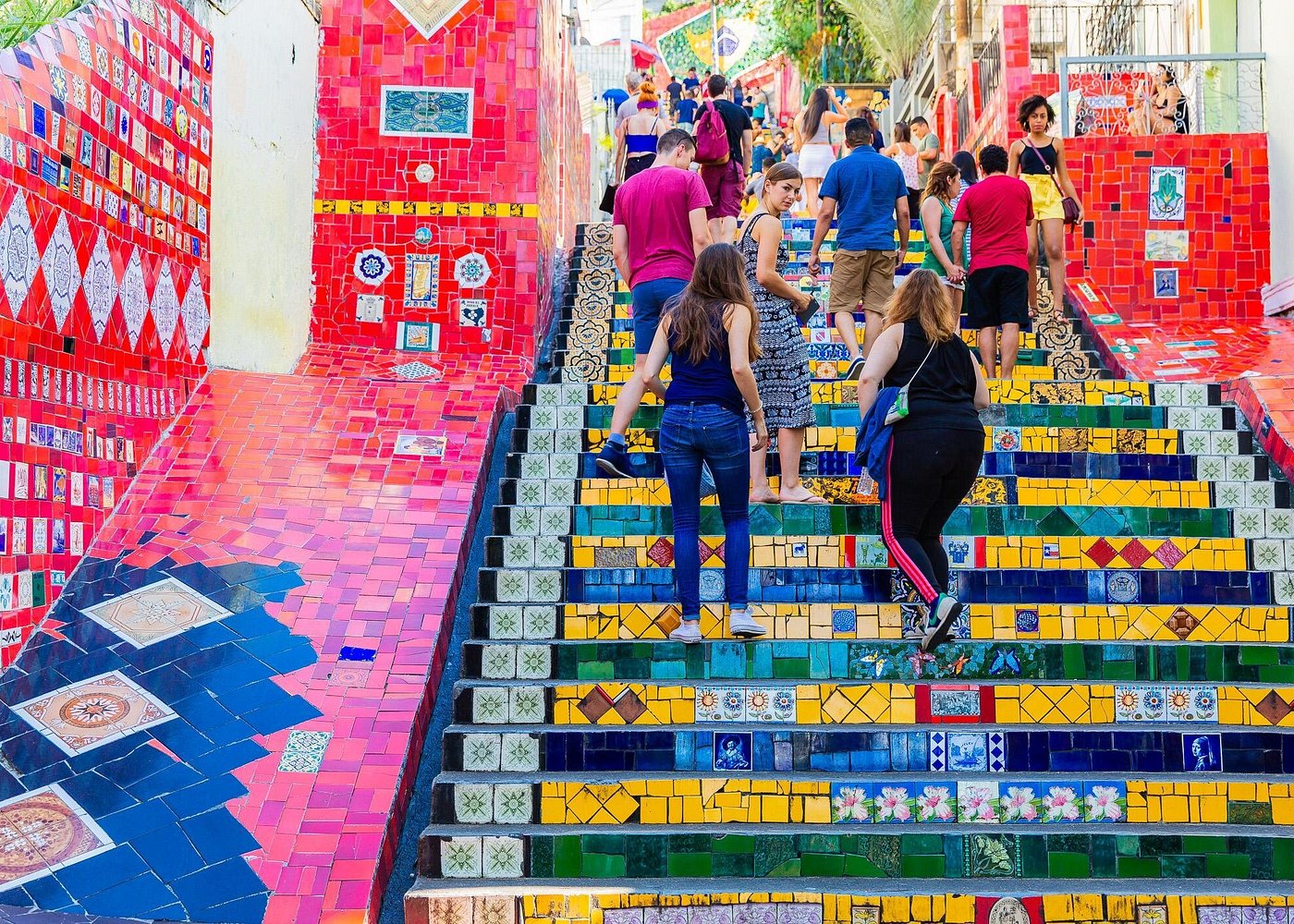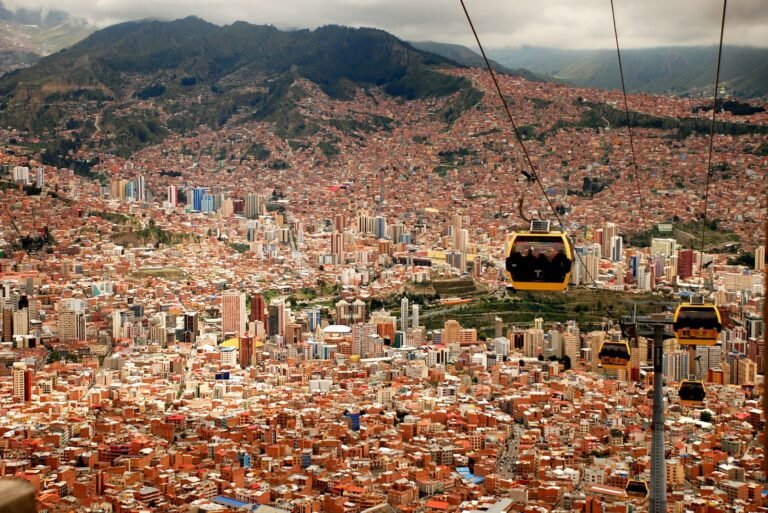Rio de Janeiro Travel Guide: Top Attractions & Tips
Captivating Introduction
Rio de Janeiro is a city that pulses with energy, color, and contrast. Nestled between lush forested mountains and the glistening Atlantic coastline, it’s a destination that captivates every type of traveler—from thrill-seeking adventurers to beach-loving sun worshippers. Whether you’re sipping a caipirinha on Copacabana Beach, hiking up to the iconic Christ the Redeemer, or dancing through the streets during Carnival, Rio promises an unforgettable experience.
In this guide, you’ll explore the best neighborhoods, must-see attractions, thrilling tours, cultural insights, hidden gems, and insider tips to make the most of your trip to the “Cidade Maravilhosa.” Things to do in Rio de Janeiro
Destination Overview & Neighborhood Breakdown
Rio de Janeiro, Brazil’s second-largest city, is split between natural wonders and vibrant urban life. From golden beaches to historic hills, here’s how the city breaks down:
- Copacabana: Best for beach lovers and first-time visitors. Expect iconic sand, lively bars, and easy access to attractions.

- Ipanema: Trendy and upscale, with world-famous beaches, chic boutiques, and elegant dining.

- Lapa & Santa Teresa: Perfect for culture lovers and night owls. These historic districts are full of colonial charm, art galleries, and samba clubs.

- Barra da Tijuca: Known for luxury condos and long, tranquil beaches—ideal for families or those seeking calm away from the tourist buzz.

- Mirante Dona Marta: Offers some of the best views of Rio de Janeiro, usually with smaller crowds than the city’s better-known viewpoints.

Recommended Experiences in Rio de Janeiro
Top Places to Visit
Christ the Redeemer

Towering over Rio from Corcovado Mountain, this is Brazil’s most iconic statue and a New Seven Wonders of the World site. Book a skip-the-line ticket or guided tour via Viator for ease.
Sugarloaf Mountain (Pão de Açúcar)

Ride the cable car to the summit for unbeatable sunset views over Rio. Opt for a panoramic tour with transfers to maximize your experience.
Selarón Steps (Escadaria Selarón)

An Instagram favorite—this kaleidoscope of tiles from around the world bridges Lapa and Santa Teresa.
Maracanã Stadium

A must for football fans. Visit on a guided stadium tour or catch a match for the full experience.
Tijuca National Park

The world’s largest urban rainforest, perfect for hiking, birdwatching, and escaping the city bustle. Parque Nacional da Tijuca Tours
Best Time to Visit
- December to March (Summer): Hot, humid, and lively—ideal for beach lovers and Carnival-goers.
- February: Time your visit with Carnival, Rio’s most explosive and colorful event.
- May to October (Winter): Cooler, drier, and less crowded—great for sightseeing and hiking.
Pro Tips:
- Visit Christ the Redeemer early in the morning to avoid clouds.
- Book Carnival tickets months in advance.
- Off-season (May–August) offers lower hotel rates.
Top Things to Do
- Hang gliding over Rio from Pedra Bonita

- Join a samba workshop or dance show

- Book a sunset boat cruise around Guanabara Bay

- Try a guided food tour in Rio De Janeiro

Culture & History
Rio’s soul is samba, soccer, and syncretism—a cultural melting pot of African, Portuguese, and Indigenous influences.
- Carnival is not just a party but a cultural ritual rooted in Afro-Brazilian heritage.
- Portuguese colonialism shaped Rio’s architecture, seen in buildings like the Royal Portuguese Reading Room.
- Favelas, often misunderstood, are rich in community, music, and resilience. Guided, ethical tours reveal their vibrant culture.
Beaches, Nature & Outdoor Experiences
- Copacabana & Ipanema: Famous for sunbathing, beach volleyball, and kiosks serving cold coconuts.
- Prainha & Grumari: Secluded beaches ideal for surfers and nature lovers.
- Parque Lage: A romantic garden at the foot of Corcovado, popular with artists.
- Botanical Garden (Jardim Botânico): A peaceful escape with 6,000+ species of tropical plants.
Tip: Bring sun protection, cash for kiosks, and go early for the best spots.
Viewpoints & Photo Opportunities
- Christ the Redeemer: For the ultimate selfie over Rio.
- Sugarloaf at sunset: Unmissable golden-hour views.
- Mirante Dona Marta: A quieter spot with panoramic city views.
- Vista Chinesa: A hidden gem in Tijuca Forest offering postcard-worthy scenes.
Wear hiking shoes and pack water, especially if trekking to these spots.
Local Food & Drink Guide
- Feijoada: A hearty black bean stew—try it at Casa da Feijoada in Ipanema.
- Moqueca: A flavorful seafood stew from Bahia.
- Coxinha: Chicken croquettes found in every bakery.
- Pão de Queijo: Cheese bread perfect for breakfast or a snack.
Drink must-tries:
- Caipirinha: Brazil’s national cocktail.
- Guaraná: A sweet, fizzy local soda.
Getting There & Getting Around
- Public Transport: Use the metro for major tourist spots. Buses cover more areas but can be confusing.
- Rideshares: Uber is widely available and safe.
- Taxis: Use official stands or radio taxis to avoid scams.
Pro Tips:
- Download Moovit or Google Maps for navigation.
- Avoid rush hour when traveling to beaches or airports.
- Ilha Fiscal: A fairytale-like island palace with guided tours.
- Pedra do Telégrafo: Popular for illusion cliff photos (expect a short hike).
- Cinelândia & Theatro Municipal: A gorgeous historic square few tourists visit.
- Museu do Amanhã (Museum of Tomorrow): A futuristic science museum by the harbor.
Custom Experiences & Safety Tips
- Private samba classes, customized city tours, and even helicopter rides are available for those seeking unique experiences.
- Safety Tips:
- Avoid flashy items and stay alert in crowded areas.
- Stick to well-lit areas after dark.
- Use hotel safes for valuables.
Respect local customs, especially when visiting religious or community spaces.
Nearby Destinations & Add-On Trips
- Búzios: A chic beach town just 3 hours from Rio.
- Ilha Grande: A car-free island paradise with jungle hikes and snorkeling.
- Petrópolis: A charming mountain retreat with royal palaces and cool weather.
Buses and private shuttles are available from Rio; book in advance during holidays.
Practical Travel Tips
Rio de Janeiro offers a dynamic mix of nature, culture, and adventure. Whether you’re dancing at Carnival or watching the waves crash at Ipanema, there’s no shortage of magic in this city.
Before You Go Checklist:
- Book popular tours ahead (especially during Carnival).
- Pack sunscreen, light clothing, and good walking shoes.
- Learn a few Portuguese phrases to enhance your experience.
Start planning your Rio escape today—whether it’s a romantic getaway, family adventure, or solo journey. Book your tours and experiences here and dive into the vibrant heart of Brazil. Visit our Homepage








